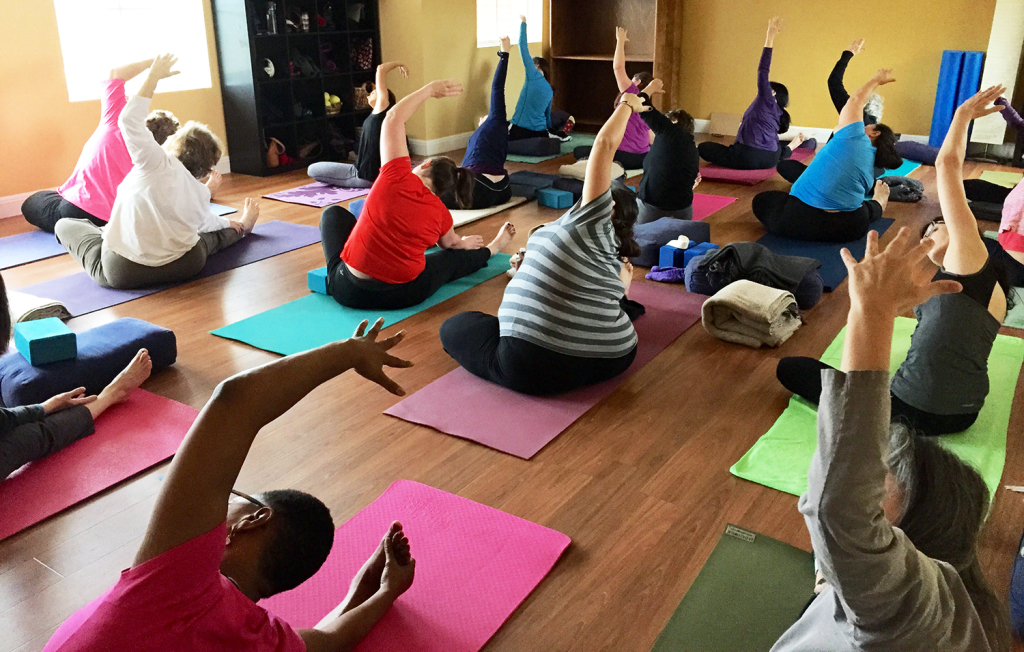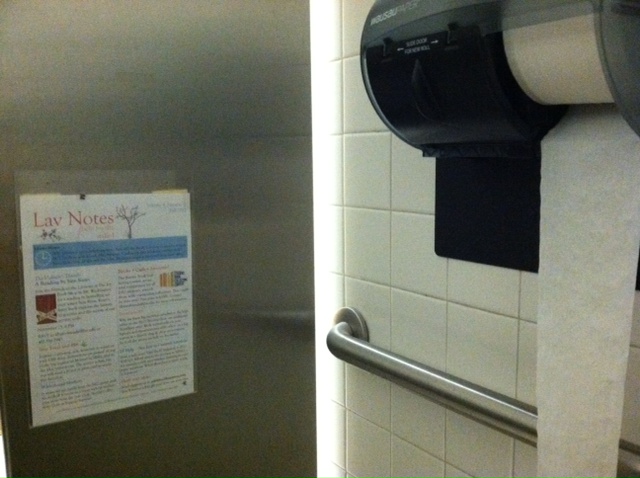Making Workplace Health Promotion (Wellness) Programs "Work"

When businesses take stock of their employees’ health and well-being, they are often surprised by their findings: Most people are not exercising enough, a significant number are overweight and too many have risk factors—such as elevated cholesterol or high blood pressure—that can lead to heart disease, diabetes or other chronic illnesses. With an eye on curbing healthcare costs and improving workers’ health, businesses are increasingly turning to workplace health promotion (also known as wellness) programs as a way to encourage employees to exercise, eat better, quit smoking and reduce their risk factors for chronic diseases. In fact, about half of companies with 50 or more employees report that they have at least one health promotion program in place. For really large companies (more than 50,000 employees) this jumps to 90%. Despite this trend, a nagging question still remains; do wellness programs really “work”?
The simple answer is “yes.” A more accurate one is that much depends on the nature of the health promotion program and how companies define success. Too often, companies that merely offer a smoking cessation program or reimburse gym fees are viewed under the same lens as those that have integrated a comprehensive program of health promotion and well-being initiatives into their corporate culture. Do all programs work? Critics, citing inconsistent data on the financial return (return on investment or ROI) of workplace programs, conclude that they are a waste of money. But at companies with robust wellness programs with high levels of employee participation, corporate leaders measure success beyond a positive ROI—considering increased productivity, reduced absenteeism, the ability to attract and retain top talent, and the overall feeling among employees that theirs is a good place to work.
In a project sponsored by the Robert Wood Johnson Foundation, we set out to define what makes a really great workplace health promotion program—the kind that does “work.” We reviewed the literature, sat down with dozens of experts and then visited nine companies—Turck Inc., Graco, Lincoln Industries, USAA, Dell, Citibank, Next Jump, LL Bean and Johnson & Johnson—organizations that have won accolades for their programs and demonstrated that they do wellness right. Each firm was unique, yet all had incorporated a culture of well-being into their core values, and all had corporate leaders who believed this was the right thing to do for employees and the company’s bottom line.
There is much we have learned from our study and admittedly, it is difficult to distill individual stories into a recipe for success at all companies. Still, below we have identified nine best practices that are essential to building a top-quality workplace health promotion program.

1) One Size Does Not Fit All
Despite the promise of some vendors, workplace health promotion programs cannot be “dropped into” companies, but instead must be tailored to meet the unique needs of each organization and its employees. Some important parameters to consider include the size of the company, the nature of its business, and employee demographics—such as average age, income, health status and percentage of people at risk for preventable illnesses. The process of figuring out what works best starts with collecting and analyzing health and lifestyle data from employees—typically by having workers fill out a health risk assessment (HRA) survey and, in some cases, undergoing biometric screenings at work or in their physician’s office. By analyzing these data, organizations can see gaps in health and wellness and identify which interventions are needed.
For example, after administering an HRA, LLBean discovered that the obesity rate in several call centers was a staggering 66% and across the Maine-based company many workers were at high risk for diabetes, heart disease and musculoskeletal injuries. A big challenge was how to implement the Healthy Bean program and reach some 5,000 employees (average age 50) across multiple locations, including retail stores and manufacturing plants. In contrast, NextJump, a New York City-based technology firm has about 200 employees, mostly software engineers (average age 28), working in the company’s Manhattan location. A major focus at NextJump is getting its young employees to move away from their computer screens, pizza boxes and energy drinks and refocus on a more balanced lifestyle that includes exercise, regular sleep and healthy meals.
Both of these companies are committed to a culture of well-being and both can claim success—LLBean has an 87% participation rate in its Healthy Bean program; at NextJump more than 80% of employees work out twice a week (or more) using the on-site gym. Both offer healthy food choices, use smart incentives and communicate strategically to encourage participation. Medical costs at the two companies have grown more slowly than the average. Still, much of the success is rooted in program designs that meet the specific health needs of their two very different sets of employees engaged in very different kinds of work.

2) Create a Culture Not a Program
Providing employees with free flu vaccines is commendable but it is not a wellness program. A vaccine effort along with smoking cessation aids and a $50 reward for completing a health risk assessment (HRA) survey also fall short of a high-quality health promotion effort. Organizations that offer “islands of wellness” instead of a fully integrated vision for workplace health promotion often fail to engage employees and see little impact on population health and well-being. These programs typically don’t work because they suffer from poor design, underinvestment and lack of leadership.
Best practice companies begin the process of creating a healthy company culture by “baking” health and well-being into the foundation of their organizations. These organizations are genuinely concerned about their workers and their families, treating them as people, not assets on a spreadsheet with an attached cost. At Lincoln Industries, a Nebraska-based manufacturer, the process of creating a culture of health begins as early as the hiring process. “We select new hires in this order of priority: fit with the company, and its beliefs and culture of health; then talent and skills,” says Dan Krick, vice president of people resources at Lincoln Industries.
A focus on well-being starts at the top, with executives and managers leading by example; letting employees know that they will not be penalized if they take time to exercise, eat healthier and focus on reducing stress. In fact, the overall message at these companies is that a healthier workforce is a key part of the corporate mission and ultimately, results in better performance at work. The culture of health isn’t limited to improving physical measures such as smoking rates, reducing cholesterol and increasing fitness; at the best organizations emotional and financial health are also part of the wellness equation. Employees are encouraged to volunteer in their communities, learn how to better manage their finances, reduce stress and handle family issues like caring for an aged parent.

3) Use Incentives Wisely
The Affordable Care Act allows employers to offer workers financial incentives equal to 30% of the cost of health insurance premiums if employees meet certain biometric measures like healthy weight, blood pressure and cholesterol; are non-smokers and exercise regularly. According to the National Business Group on Health, some 86% of large employers now use financial incentives to encourage healthy activities and lifestyle. These incentives run the gamut from $150 for employees who fill out yearly health assessments to gift cards for meeting a fitness goal to reduced healthcare premiums for nonsmokers.
Best-practice companies believe that incentives are most effective when used as a “carrot” to boost initial participation in health promotion programs; they become less effective as a strategy for maintaining long-term behavior change. Further, they believe that incentives should never be used as a “stick” to penalize workers for poor health habits or to discriminate against employees who are unable to participate in programs. Organizations are learning that ultimately it is more important to focus employees’ attention on the intrinsic rewards of adopting and maintaining healthy behaviors, such as having more energy for family and friends, being more productive at work and feeling a sense of accomplishment.
How do smart incentives work in practice? The key is to provide alternate paths to rewards and help employees achieve their goals. The San Antonio-based financial services company USAA, for example, has come up with an innovative “tiered incentive” program that gives employees multiple ways to earn “Healthy Points,” including using the on-site fitness center, participating in a community walk, eating healthy choice items at the cafeteria, taking a yoga class or undergoing free biometric testing. Points are rewarded for outcomes too—but in a way that encourages employees to reach attainable goals. For example, while fit employees earn Healthy Points for having a low BMI, overweight ones can receive a $250 cash bonus for losing 10% of their body mass—a more achievable goal. Employees who earn 1,000 healthy points in a year receive 5% savings on their health insurance premiums; 700 points leads to a 2% savings. The idea of tiered incentives, according to Peter Wald, chief medical officer and director of USAA’s health promotion program, is to reward the people who are already healthy, while also acknowledging the efforts of those who are trying to get healthier.

4) Make Wellness Convenient and Ubiquitous
The more ways employees can engage in health promotion activities, the higher the participation rate and the better the results. Michael Sneed, vice president for global corporate affairs at Johnson & Johnson (J&J), says, “Programs have to be as varied as the individuals we have in our company. There are a variety of ways to stay healthy and providing access to all of them is important—so is making it as convenient as possible.”
J&J should know; the organization has more than 250 operating companies with 128,000 employees in 60 countries. Amazingly, 88% of employees submit an HRA each year and participate in at least one of the company’s Live for Life programs—which include health coaching, smoking cessation, pedometer challenges, fitness classes and stress reduction, among others.
Jason Langhorn, a materials research engineer at DePuy, a medical device company owned by J&J, says he got involved in the company’s Lose to Win program with the goal of losing some of the weight he’d gained over the past decade. Three years later, he’s down 30 pounds, taking spin classes three times a week, doing the daily 1,000-step challenge and dropping in on 15-minute abs and yoga classes at lunch. “These activities aren’t just healthy,” says Langhorn, “they also promote social interaction, which has its own benefits at work.”
The best strategy is to offer ways to engage the fit marathoner along with the reluctant couch potato and everyone in-between. Many of the companies we visited had on-site fitness centers and medical clinics; all had abundant healthy food choices, health coaching for at-risk employees, and on-line challenges and activities, as well as smart phone apps that track progress. Other offerings include stretch breaks for line workers, recreational sports teams, lunchtime yoga and exercise classes, group fitness challenges and active design features such as well-lit stairwells and walking paths. Many of the best organizations also consider emotional and financial well-being as important elements in their health promotion programs and offer “lunch and learns” on techniques for reducing stress, strategies for achieving financial stability and paid time off for volunteering. Of course, management also has to make clear that wellness is a priority and that these programs are available to all employees—even to those who work hourly shifts that don’t allow much flexibility.

5) Relentless Communication
Employees at Turck Inc. refer to the communication about health promotion programs as “relentless.” At USAA, the key words are “surround sound.” The trick is making information about health and well-being constant but still engaging—communicated in varied ways so as not to become just so much more background noise. The channels must run both ways; feedback from employees about what works and what doesn’t drives innovation and improvements in health promotion efforts.
For example, best-practice employers use a variety of message channels, such as e-mail, newsletters, break room bulletin boards, and the company intranet. Social media and mobile apps have proven to be successful means of reaching and engaging younger employees. Older works or those whose jobs keep them away from the computer may prefer posters and mailed information. In addition to increased use of technology, experts report a promising trend toward leveraging “wellness champions”— employees who are active participants in health promotion programs and motivate their workmates with personal stories of success.
Communication also involves celebrating individual successes by featuring employees in newsletters, having monthly award winners and yearly ceremonies that celebrate outstanding accomplishments in wellness. Finally, in larger companies—especially those with far-flung sites—communication is most effective when materials and messages are tailored to target audiences, differentiated when necessary to ensure that they are understood by and applicable to individuals from different cultures, race or ethnicities, or who speak diverse languages. At Dell, for example, with 108,000 employees worldwide, most sites have their own health promotion committees made up of volunteers whose job is to disseminate information about sports and recreation groups and to promote local events. As one Dell staffer put it, “Employees are more apt to open emails from team members and people they know than messages coming from corporate.”

6) Champions from the Top Down
When the CEO is on board, dedication to a culture of well-being trickles down to employees at every level of a company’s hierarchy. The current LifeWorks@Turck program grew out of a health scare CEO Dave Lagerstrom experienced. A year after he assumed the CEO role he had a type of minor stroke called a transient ischemic attack (TIA).“I hadn’t been to a doctor or had my blood pressure checked for 15 years. It was an eye-opening experience for me,” he says. Michael Dell, founder of the eponymous computer company, has a keen personal interest in nutrition and fitness and wanted to make his health and wellness goals a part of Dell’s culture.
Once the CEO is onboard, management from the senior level down to group leaders and factory floor managers have to “walk the talk.” At Lincoln Industries, managers are rated on a scale of 1 to 5 on the degree to which they adhere to the beliefs and drivers of the company, which include “Wellness and healthy lifestyles are important to our success.” Furthermore, their bonuses are tied to the extent they lead by example; they are rated on what they achieve in improving their own health and how well they motivate their subordinates.
Leaders need to let employees know that not only is it OK to participate in health promotion programs, but that it is a priority for management. At Citibank, 10 senior leaders lent their support to a Global Fitness Challenge that let employees worldwide participate by entering healthy behavior information into a company-created computer dashboard. The challenge involved getting individuals to gradually increase their activity—running, walking, or playing a sport, for example—over a four-week period. The senior leaders each recorded videos about their personal activity challenge and offered to make donations to charity for employees who completed the challenge. Managers at all levels show their commitment to health promotion by instituting flexible scheduling options that grant company time to participate in programs, use the gym or access other services. They also do this by being the ones to organize group activities, lead stretching breaks and create team challenges—first group to hit 100,000 steps!—that encourage friendly competition.

7) Measurement by the Numbers—But Not the Ones You Might Expect
At many companies, upper management is sold on wellness by the promise that health promotion programs will save money on health care costs. For example, one oft-quoted study—published in the November 2012 issue of Health Affairs—found that employer health care costs are 15.3% lower for physically active versus inactive employees. Meanwhile, the average return on investment (ROI) from health promotion programs has been reported in several large studies to be 3:1 ($3 in savings to each $1 spent on programs). “It’s a piece that I wouldn’t want to be without,” says Niko Triantafillou, vice president for Wellness and Health Plan Strategy at Citibank, adding that a positive ROI helps convince the executive suite that the whole “culture of health” is worthwhile even as Citi has in the past been forced to cut staff and reduce spending.
Still a growing number of experts view ROI estimates as notoriously “squishy.” A recent survey of PepsiCo’s workplace health promotion program found that while efforts designed to help employees with chronic illness manage their diseases had positive ROIs, “lifestyle” programs geared toward healthy workers did not.
But ROI is far from being the only important measure of a health promotion program’s success. “I can make ROI reports say whatever you want them to say, but it’s apparent that investing in employee well-being works,” says Turck’s chief operating officer Rob Diem. “Our turnover rates are very low, medical costs are down, and employee satisfaction nears 90%.” Like Diem, employers must decide which measureable outcomes are the most valuable to them and their employees. Lincoln Industries, like most of the companies we visited, focuses on measuring increased productivity, reduced absenteeism, being identified as the employer of choice in a given community or industry, improved overall health risks of workers, and increased quality scores on products and services the organization offers. Other benefits cited by executives include earnings growth, increased market share and feedback from employees that “my company cares about my well-being.”
NextJump, for one, measures how effectively they attract and retain top software engineers in a competitive market where talent is continually being poached and young staffers jump from firm to firm. According to CEO and founder Charlie Kim, having a culture that promotes health, wellness and community has been an integral factor in reducing the turnover rate at the company from 40% to 1% and gives the tech company the pick of top job candidates. The key takeaway when quantifying the success of health promotion programs is that businesses need to look at wellness as an investment in human capital, rather than a fixed benefit that must be justified by simply cutting short-term healthcare costs.

8) Wellness is Not Built In a Day
The best companies look at wellness as a long-term commitment. Peter Wald at USAA says, “You cannot expect to see results from health and wellness programs until three to five years down the road.” Dell has been at it for 12 years—despite significant staff reductions and making the transition from a publicly traded company to private ownership. J&J has had a workplace health promotion program in place for more than 30 years even as the structure of the company radically changed from a single entity to a diverse set of independent companies. Lori Zimmerman, Medical Director at Citibank says, “We underestimated how much time it would take to do this. It took five to six years to get the U.S. program up to speed, and globally it will take much, much longer.”
Executives that understand this narrative arc, and the effort that goes into changing a culture, have become the strongest champions for wellness and are committed to keeping programs intact even during economic downturns. At Lincoln Industries, the health promotion staff remained in place even as 80 other employees were laid off during the most recent recession period in 2008. Turck’s “culture of well-being,” present even as far back as 1965 when brother Hans and Werner Turck founded the company, is considered so integral to the business model of the company that virtually no health promotion programs were scaled back there either during the downturn. “There would have been a mutiny,” quips CEO Dave Lagerstrom.
Organizations that are in it for the long haul recognize that the best health promotion programs require active input from employees to evolve and grow. This evolution is helped along by surveys, open communication channels and continual reassessment of programs to make sure they are meeting the health and wellness needs of all workers.

9) To Err is Human: Learning from Mistakes
All of the companies we visited saw their health promotion initiatives as growing and evolving as they progress. Mistakes are part of the learning experiences and constant tweaking is necessary for success. Even with the best intentions, wellness leaders can’t always predict which programs will be well-received and which will face resistance. At USAA, for example, removing all the unhealthy foods from the company’s cafeterias resulted in some employees buying their lunches elsewhere. Instead, Wald’s team used strategies such as tiered pricing (a hamburger is 50 cents more than a turkey burger), food placement (displaying fruit front and center, cookies at the bottom of a rack), color coding (green stickers for “healthy choices,” red for foods to avoid) and “stealth health” (putting turkey sausage and egg whites in breakfast wraps.) Now there are choices, but most employees pick the healthy ones.
Some companies reported that they misjudged how employees would view health promotion initiatives. The first year Turck’s on-site medical clinic was open, employees made just 900 visits to the clinic. “It was a ‘build it and they will come’ mentality that didn’t work,” says Mick Hannafin, a benefit consultant who works closely with the company. Management didn’t anticipate that some workers would eye the clinic with suspicion; “Why are you putting this clinic here at work? What are you trying to find out about me?” Positive messaging about the clinic’s benefits—employees and their families can get preventive and primary care in one convenient place, stop in during a break to pick up medication or have laboratory tests at no cost—helped it become an integral part of Turck’s wellness efforts. So did assurances that the company is committed to privacy and, since an outside vendor operates the clinic, health information remains confidential.
In the end, focusing on best practice companies brings to light important lessons for other organizations interested in creating a healthy culture for their employees. The benefits can be tangible and measurable in terms of healthcare cost savings, increased productivity, reduced absenteeism, staff retention and improvements in health risk factors such as smoking and obesity. The other, perhaps less easily quantifiable reward of a high quality health promotion program is the potential for impacting public health and well-being. Many of us spend one-third of our time or more at work. If workplaces provide access to healthy food, exercise, stress management, primary care and prevention, they are likely to play an important role in improving the quality of their employees’ lives, alleviating at least some of the burden of chronic illness in our population, and, as an added bonus, increasing the competitiveness of U.S. companies.
Written with support from the Robert Wood Johnson Foundation
